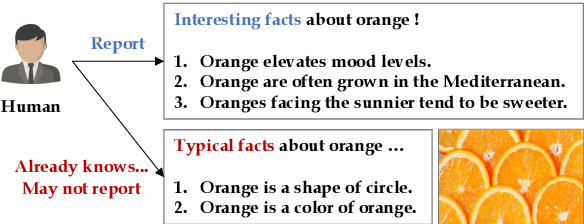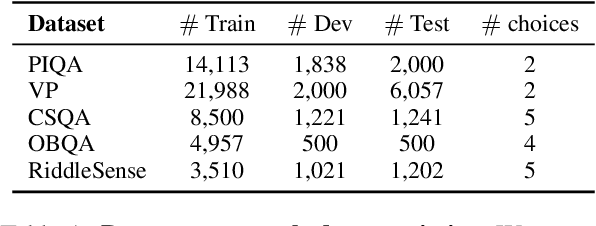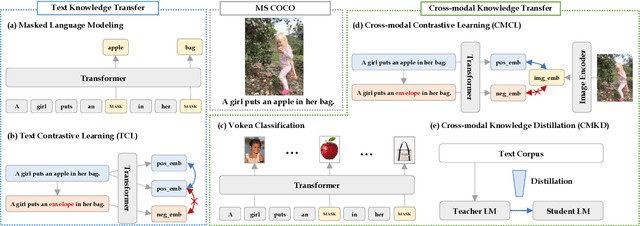Leveraging Visual Knowledge in Language Tasks: An Empirical Study on Intermediate Pre-training for Cross-modal Knowledge Transfer
Paper and Code
Mar 17, 2022



Pre-trained language models are still far from human performance in tasks that need understanding of properties (e.g. appearance, measurable quantity) and affordances of everyday objects in the real world since the text lacks such information due to reporting bias. In this work, we study whether integrating visual knowledge into a language model can fill the gap. We investigate two types of knowledge transfer: (1) text knowledge transfer using image captions that may contain enriched visual knowledge and (2) cross-modal knowledge transfer using both images and captions with vision-language training objectives. On 5 downstream tasks that may need visual knowledge to solve the problem, we perform extensive empirical comparisons over the presented objectives. Our experiments show that visual knowledge transfer can improve performance in both low-resource and fully supervised settings.
 Add to Chrome
Add to Chrome Add to Firefox
Add to Firefox Add to Edge
Add to Edge